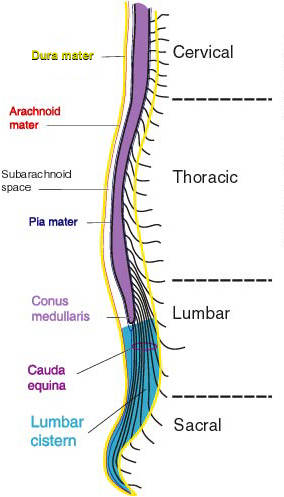
The spinal cord is an elongated
portion of the CNS, located within the vertebral (spinal) canal. Although the
cord and vertebra were aligned during fetal life, the spine itself continues
to grow so that in the adult the spinal cord terminates at the level of the
2nd lumbar vertebra. The cord tapers and terminates as the conus medullaris.
The cord is surrounded by the meninges - dura, arachnoid and pia. The cerebrospinal fluid (CSF) fills the subarachnoid space; the enlarged CSF space below the termination of the cord is the lumbar cistern. The pia is adherent to the spinal cord tissue.
The nerve roots attached to each segment of the spinal cord supply the body: areas of skin supplied by certain segments are called dermatomes, and the muscles supplied by adjacent segments are called myotomes.
The nerve roots below the termination of the cord that are found in the lumbar cistern are collectively called the cauda equina [to be shown later in more detail].